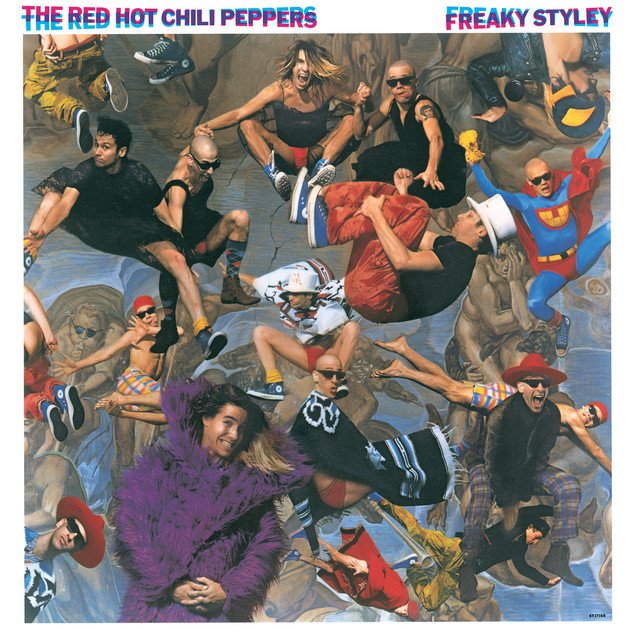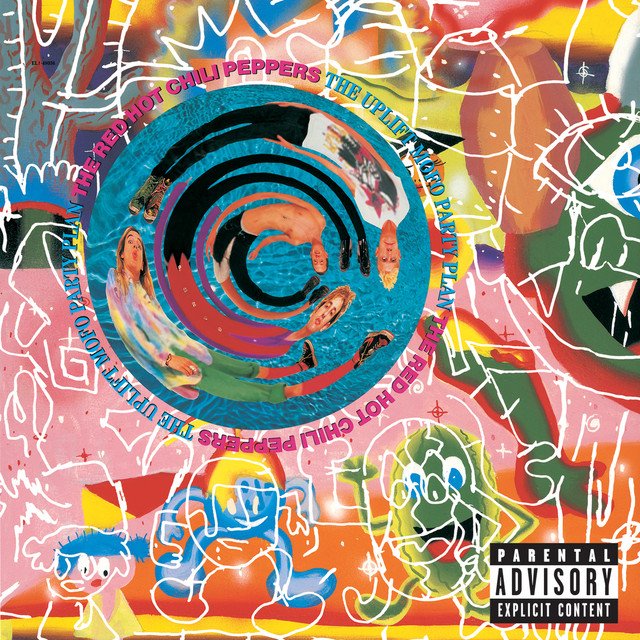Before They Were Red Hot: The Red Hot Chili Peppers in the 80s
Photo by MICHEL LINSSEN
More than just “Scar Tissue” and “Snow,” long before their time inciting riots at Woodstock and cutting platinum albums, the Red Hot Chili Peppers were already the hottest thing in the LA underground scene. By the time their 1991 masterpiece Blood Sugar Sex Magik put them on the map, the Chili Peppers had already released four studio albums. Unfortunately, later in their prolific and chart-topping career, these early records fell into obscurity. Let's take a moment today to look back at these experimental relics and appreciate the Chili Peppers' forgotten 80s albums.
After playing their first gig to a crowd of 30 in 1982, they spent the rest of the Reagan era experimenting with playing styles, band members, and narcotics until they found a combination that suited them. Right before recording on their first album began, the group took a hit when Jack Irons and Hillel Slovak announced their departure to focus on a record deal they had signed with their other band What Is This?. For their replacement, the Chili Peppers picked up ex-Weirdos members Cliff Martinez and Jack Sherman. This album, though it contains plenty of great tunes, falls short of what you may expect from a Chili Peppers release. The record is primarily a funk piece, and one that lacks that sharp edge that would define the band's later albums. This is due in part to producer Andy Gill, who influenced the band to dull their sound with the hope it would increase their chance of being played on the radio. The album met a lukewarm reception, generally being looked on favorably by fans but receiving negative reviews from many critics. The band has gone on record expressing their disappointment with how The Red Hot Chili Peppers turned out, with bassist Flea calling it “stiff.” Still, there are classic tracks on this album which have held up to the test of time; “True Men Don’t Kill Coyotes” and “Buckle Down,” are now well known by their live recordings. Most entries on this album do, however, fail to deliver on that something special that leaves an imprint on the listener’s soul.
Three months before recording began on Freaky Styley, the Chili Peppers experienced another shake-up when they fired Jack Sherman over difficulties that occurred during the Red Hot Chili Peppers tour the year before; he was replaced by original guitarist Hillel Slovak. The band also canned their producer in favor of bringing in renowned funk musician George Clinton. Only a year later in 1985, the band released its sophomore album, Freaky Styley. Once again garnering an underwhelming response, the album failed to be a career boost. Though it was the first record the Chili Peppers were satisfied with, they knew it wasn’t radio material and, like its predecessor, it fell short of the Billboard 200. The album has a far darker sound than previously heard, being shaped by the band's new relationship with heroin. In my mind, this album is where the Chili Peppers began to come into their own. “American Ghost Dance,” “Blackeyed Blonde,” and “Yertle the Turtle” are crown jewels of punk funk with ripping guitar and bass lines that hit the listener right in the chest like a shot of absinthe. It pays homage to the pure funk groove of their debut album, featuring tracks like their cover of Sly and the Family Stone's “If You Want Me to Stay,” and the band's underground punk roots can be heard on thrashers like “Battle Ship.” The band even dips into comedy songwriting with “Sex Rap.” Now putting on my critic face, I understand why the album didn’t perform commercially. None of the tracks made it on air except for late-night college radio stations. When it came down to it, getting out there in the 80s was still about that radio playtime. At the time, if you couldn’t make it on FM, you weren’t going anywhere in the industry. Luckily, they had a seven-album contract with EMI Records, affording them more opportunities to woo listeners in the following years.
The Uplift Mofo Party Plan was the first, and last, album on which all four founding band members would play. EMI Records paid the band a stipend of $5,000 to make a demo for the album. They hired Keith Levene, founding member of Public Image Ltd, to produce the demo – not for his experience cutting punk records, but for his fellow appreciation of junk. He and Slovak spent $2,000 of the stipend on drugs – that's about $5,757 today. Their addiction drove a wedge between band members and a month before recording began, Slovak was canned, making room for Jack Irons to rejoin. The release finally managed to crack the Billboard 200, making it up to 148. Critically, the album made passing grades, getting 6s out of 10 and 3 out of 5 stars all around. Listening to the record, I couldn’t shake the ever-present weight of how outdated it was. I’m sure when The Uplift Mofo Party Plan hit the scene in the Fall of 1987, it was mind-bending progressive stuff, but in 2025 it just doesn’t work. The album snaps violently between tunes that a totally rad youth pastor would listen to and lame attempts at being edgy that I would love if I were still a burnt-out high schooler. That's not to say there was nothing for me here. “Walkin’ on Down the Road” made its way onto my playlists, and “Behind the Sun” has a killer sitar riff that must be heard. This entry comes off as a love letter to the band's earliest days when they still went by Tony Flow and the Miraculously Majestic Masters of Mayhem. The songs sound like something my buddies and I would write when we were still practicing out of my parent's basement. What else would you expect from four guys who hadn’t played together since they were too young to buy beer?
The Chili Peppers’ lineup once again turned on its head in the time between The Uplift Mofo Party Plan and the final 80s album, Mother’s Milk. Not long after the band returned from touring for their third album, Slovak overdosed and passed away. The band was shattered by their guitarist's death, causing Irons to step away once again and vocalist Anthony Kiedis to flee Los Angeles like a fugitive. Kiedis would eventually return and check into rehab for his own heroin addiction, after which he rejoined the band. They hired drummer D. H. Peligro and guitarist DeWayne McKnight to replace the lost members for their upcoming tour. A few shows into the tour, McKnight was let go as he simply didn’t mesh with the rest of the group; he was replaced by John Frusciante. Months later Peligro also got the boot and was subsequently replaced by Chad Smith. This lineup became the band's most famous, and their first record together was the break they had been blindly swinging at this whole time. Mother’s Milk came out in 1989; it got mixed reviews from critics but was undeniably popular with fans. It made its way up to 52 on the Billboard 200 and was the band's first gold record. If you are a fan of the Chili Peppers’ contemporary work, you’ll dig it. You may already be grooving on it, as unlike the previous three releases, Mother’s Milk one never went completely out of style. You won't find the album cover on a t-shirt at Hot Topic, but anyone who calls themselves a Red Hot Chili Peppers fan will recognize this record. It has thumping bass lines, shredding guitars, pounding beats, and razor-sharp vocals, everything you want out of a Chili Peppers album. It’s also the host to their cover of Jimi Hendrix's “Fire,” which they infamously played at Woodstock ‘99 to a crowd of angry concert-goers who danced around raging pyres. If you haven’t heard the recording of that performance yet, I advise you to go check it out; it's electrifying. If I had been in that audience, I would have been overcome by the urge to start tearing down speaker towers as well.
The 80s were a rough time for the Red Hot Chili Peppers; by the end of the decade, they found their iconic sound and lineup, but it came at a price. The band went on to release their first platinum album, Blood Sugar Sex Magik, in 91’, going from cult to mass following in the process. Now 13 albums deep with a catalog of number-one singles, it's understandable that their preliminary experimental work is largely forgotten. That is the reality of fame of this magnitude; when there’s an abundance of gold, why bother with the silver? Still, I implore you to give these albums a listen not only for the history they represent but for the buffet of tasty jams they have to offer. Take a minute to see what's beyond “The Zephyr Song” and why this underground act became one of the best-selling bands of all time.




